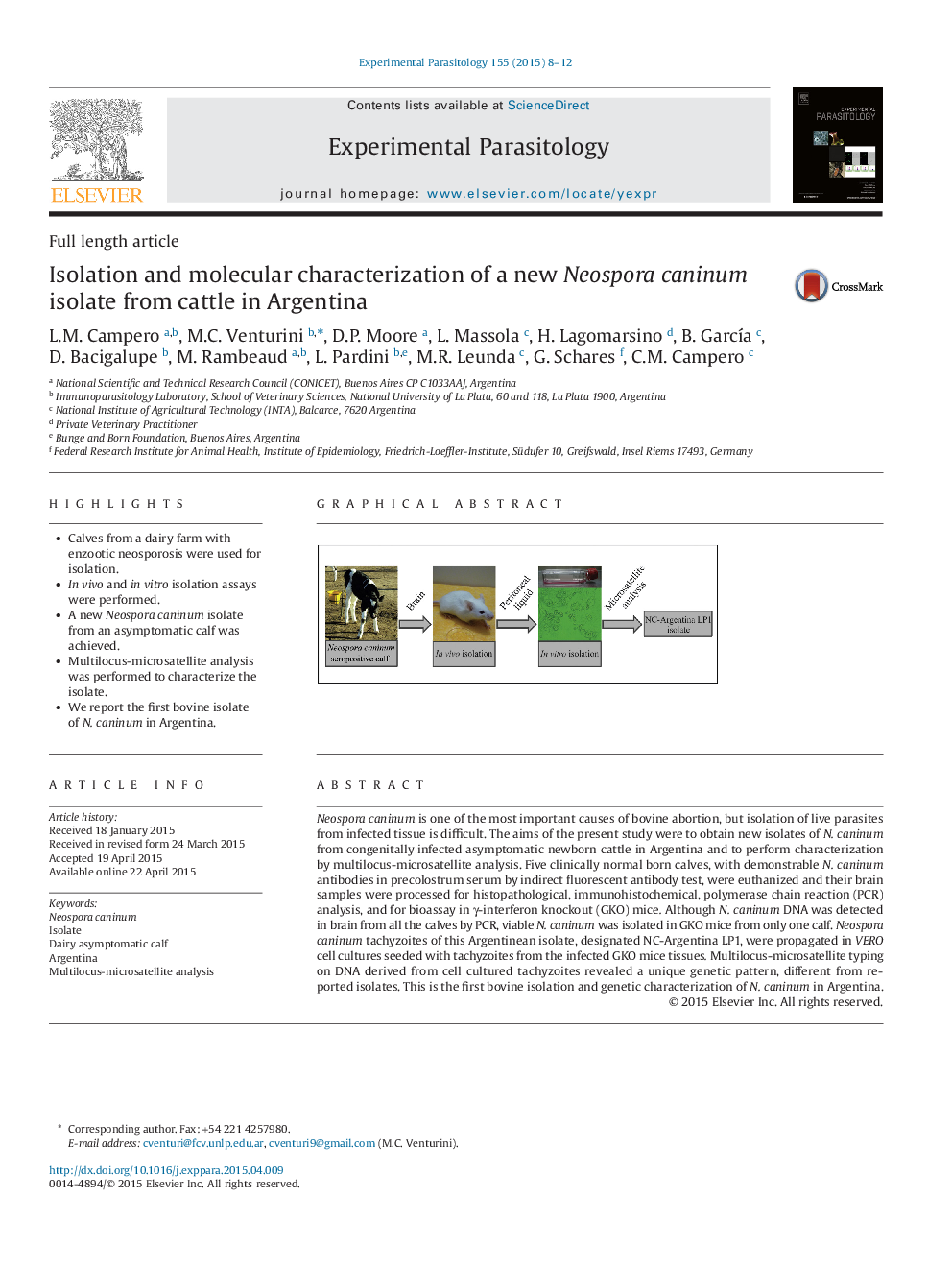| Article ID | Journal | Published Year | Pages | File Type |
|---|---|---|---|---|
| 4371000 | Experimental Parasitology | 2015 | 5 Pages |
•Calves from a dairy farm with enzootic neosporosis were used for isolation.•In vivo and in vitro isolation assays were performed.•A new Neospora caninum isolate from an asymptomatic calf was achieved.•Multilocus-microsatellite analysis was performed to characterize the isolate.•We report the first bovine isolate of N. caninum in Argentina.
Neospora caninum is one of the most important causes of bovine abortion, but isolation of live parasites from infected tissue is difficult. The aims of the present study were to obtain new isolates of N. caninum from congenitally infected asymptomatic newborn cattle in Argentina and to perform characterization by multilocus-microsatellite analysis. Five clinically normal born calves, with demonstrable N. caninum antibodies in precolostrum serum by indirect fluorescent antibody test, were euthanized and their brain samples were processed for histopathological, immunohistochemical, polymerase chain reaction (PCR) analysis, and for bioassay in γ-interferon knockout (GKO) mice. Although N. caninum DNA was detected in brain from all the calves by PCR, viable N. caninum was isolated in GKO mice from only one calf. Neospora caninum tachyzoites of this Argentinean isolate, designated NC-Argentina LP1, were propagated in VERO cell cultures seeded with tachyzoites from the infected GKO mice tissues. Multilocus-microsatellite typing on DNA derived from cell cultured tachyzoites revealed a unique genetic pattern, different from reported isolates. This is the first bovine isolation and genetic characterization of N. caninum in Argentina.
Graphical AbstractFigure optionsDownload full-size imageDownload as PowerPoint slide
